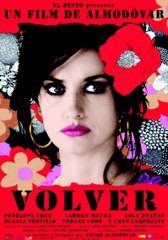In this port city of 700,000, countless mysterious smells fill your nostrils. New foods, equal parts Middle Eastern, Swahili, and Indian, drift out of small restaurants adorned with hand-painted signs. The people, descendants of various African tribesmen, South Asian technocrats, and Arab merchants, fill the air with exotic perfumes intermingled with the scent of hard labor. And then there are the piles of garbage, unrelenting and endless. Some next to markets and others confined to dumps along the pothole-laced highways. Generally, the delicious smells outweigh the pungent, but in sum, they are wholly Mombasa.
At rush hour, one is greeted with a scene of controlled chaos. Women covered from head-to-toe in black hijab rush down the street on their way to work. Newsstands crowd every corner and scream the morning’s headlines, usually detailing the latest corruption scandal. Matatutus, average size mini-vans stuffed with 15 passengers, whiz by as their attendants shout destinations. Shop owners offer their latest wares and newest acquisitions.
Symbols of progress are strewn throughout the city, interspersed with vestiges of centuries past. Shoeless men pulling rickshaws filled with mangoes and potatoes run past advertisements for the most advanced cell phone service. Across from Fort Jesus, the most powerful symbol of Portuguese colonialism in the city, stands an Internet café with an international calling center. While technological progress seems to have taken a foothold here, access to these modern (Western) conveniences is, for the most part, reserved for the rich.
This socioeconomic divide is tangible and all-encompassing. Many wealthier residents live in well-guarded fortresses just outside of the city with servants and sentries, while the residents of slums struggle simply to survive. The rich, mostly Asians and Caucasians, dine on the cuisines of their native lands and the poor, mostly Africans, eat the most common of food staples , sima, an oatmeal-like substance made of ground corn and water.
In the 1980s, HIV stepped into this equation and left yet another black mark on the poor. Today this generalization stands: HIV/AIDS is predominantly a disease of the poor. As the pandemic has swept through sub-Saharan Africa, the slums of India, and the sex tourist-laden parts of Southeast Asia, so too has it scarred the South Bronx in New York and Brixton in the U.K..
Nevertheless, unlike so many less fortunate parts of Africa, there is hope in Mombasa. The President’s Emergency Plan for AIDS Relief (PEPFAR) provides treatment for thousands of people living with HIV and AIDS in this city. The recent FDA approval of a generic version of combivir, an antiretroviral cocktail in a single pill that can be taken twice a day, provides even greater optimism in the struggle for strict adherence to difficult drug regimens
While continuing to invest in treatment strategies, developing countries such as Kenya and donor nations like the United States and European nations must also be wary of loosening prevention efforts. Currently, throughout Mombasa there are voluntary counseling and testing centers. Community-based HIV/AIDS organizations run countless education campaigns to increase public awareness of modes of transmission, disease symptoms, options for testing, and methods of treatment. However, the emerging victor between the virus’ path of destruction and those fighting its spread through prevention and treatment is not always clear or consistent.
At the Clinic
Being in Mombasa and working at Bomu Medical Centre, a USAID Center for Excellence in HIV/AIDS treatment is defined by contrasts, contradictions, and half full glasses. The HIV/AIDS pandemic began globally over 25 years ago. Tragically we are still scratching the surface on how to integrate treatment, prevention, and cultural sensitivity. Yet we have much to be thankful for. Access to the right medication renders the management of HIV/AIDS akin to chronic illnesses like diabetes, sickle cell disease, or hypertension.
For students interested in global health, (a specific and growing breed of medical, public health, sociology or anthropology student), Bomu clinic is a dream come true in a country like Kenya with its high HIV/AIDS prevalence: about 7%, which is down from 10% in 1998. Bomu resembles a well-oiled medication-distributing machine. It is a meticulously cleaned, organized, and efficient operation through which about 150 patients receive free antiretroviral therapy every day. HIV positive patients undergo three counseling sessions before beginning antiretroviral therapy. They designate someone close to them as their “buddy” to provide support and help ensure adherence to the often difficult treatment regimen. With all the different medicines, times, and rules about what to take with food and what not to, the patients have to stick to their regimen with 97% accuracy in order to see any improvement. Tuberculosis infections, which often occur concomitantly with HIV, are also managed at Bomu. TB medication is exclusively administered at the clinic. Every patient is granted a personalized TB medication kit and their process is recorded carefully with each biweekly visit. This ensures that they finish their treatment regimen, preventing the development of multidrug resistant TB, a far nastier and more costly disease to treat.
While there are countless more examples of Bomu’s efficiency and success, there remain significant and serious challenges. The sexually transmitted nature of HIV brings with it the burden of reluctance to disclose one’s status to spouses and partners. That reluctance, coupled with the all too real fear of being shunned, stigmatized, or physically assaulted means that few come to test at all. If they do, they often test in stealth; stranded and alone in their diagnosis should they turn out to be positive. Infants and children are often the unknowing victims of this rampant stigma as their parents, knowingly HIV-positive, refuse to bring them to be tested.
Current strategies for this problem center on education, counseling, openness, and outreach. Volunteers at Bomu clinic promote awareness of HIV/AIDS, the pandemic’s biased infliction upon women, getting tested, and being open through educational skits, voluntary counseling and testing outreach, and providing support for youths around issues of HIV/AIDS.
And yet, it takes more than the eradication of ignorance to change behavior. In harsh realities, actions are driven by the need to survive. Women seem to bear the brunt of this quandary here. As victims of an inequitable economy, more women have turned to commercial sex work as a somewhat lucrative way to earn their daily bread. Meanwhile Kenya’s reputation as a sex tourism attraction grows steadily, leaving women vulnerable to unspeakable abuse. Advocacy groups like Nairobi-based Solwodi (Solidarity for Women in Distress) approach these women at night to encourage them to practice safe sex, get tested, and to start new businesses with collective microfinance loans. As more women take control of their lives and, as a community, face the threat of HIV/AIDS, they find themselves empowered and willing to find other ways to safely maintain their livelihood.
Back at the clinic, there is a bittersweet feeling in the conference room every week as about 30 new patients are discussed as they have just been deemed sick enough to start antiretroviral treatment. As we mourn the reality of the large number of people infected, we also celebrate the fact that so many are now receiving treatment. Our journey has been defined by similar, conditional flickers of hope.
One of the most powerful moments we experienced was witnessing two natural births in a span of one hour. Initially it was difficult to watch the mothers suffer such inordinate amounts of pain. But when a baby girl opened her eyes for the first time, filled with wonder, innocence, novelty, and hope, all cynicism was quashed.
The hope of that baby girl seeped into our mindsets for the remainder of our trip. No matter the circumstance, a new birth carries with it new potential and opportunity. As the efficacy of HIV/AIDS treatment allocation moves into more and more communities in the region, even more social challenges and large systemic obstacles will abound. It is with the mindset of a new birth that these challenges should be faced: with every new challenge comes great possibility.

Saturday, August 4, 2007
Sunday, February 25, 2007
Generation Hope was an organization started by some senior med students here at NYU with the goal of raising awareness and funds for AIDS orphans in Malawi (the ones that Madonna steals). I became involved and was lucky enough to travel to Lilongwe in July 2006.
That experience, coupled with the rest of my summer in Mombasa and a few other experiences over the years culminated in this simple statement of belief: I believe in believing. For instance, I have never stopped believing--almost to the point of knowing--that I was capable of doing anything I set my mind to. Maybe that's the brash ignorance of someone who has been given so much. I think it's more.
To me, believing is an active verb. To believe in something is to create a context in which no other reality could possibly be true. From thoughts to words, actions to sentiments: believing is creating.
Required reading: Jerome Groopman's Anatomy of Hope
That experience, coupled with the rest of my summer in Mombasa and a few other experiences over the years culminated in this simple statement of belief: I believe in believing. For instance, I have never stopped believing--almost to the point of knowing--that I was capable of doing anything I set my mind to. Maybe that's the brash ignorance of someone who has been given so much. I think it's more.
To me, believing is an active verb. To believe in something is to create a context in which no other reality could possibly be true. From thoughts to words, actions to sentiments: believing is creating.
Required reading: Jerome Groopman's Anatomy of Hope
Subscribe to:
Comments (Atom)



